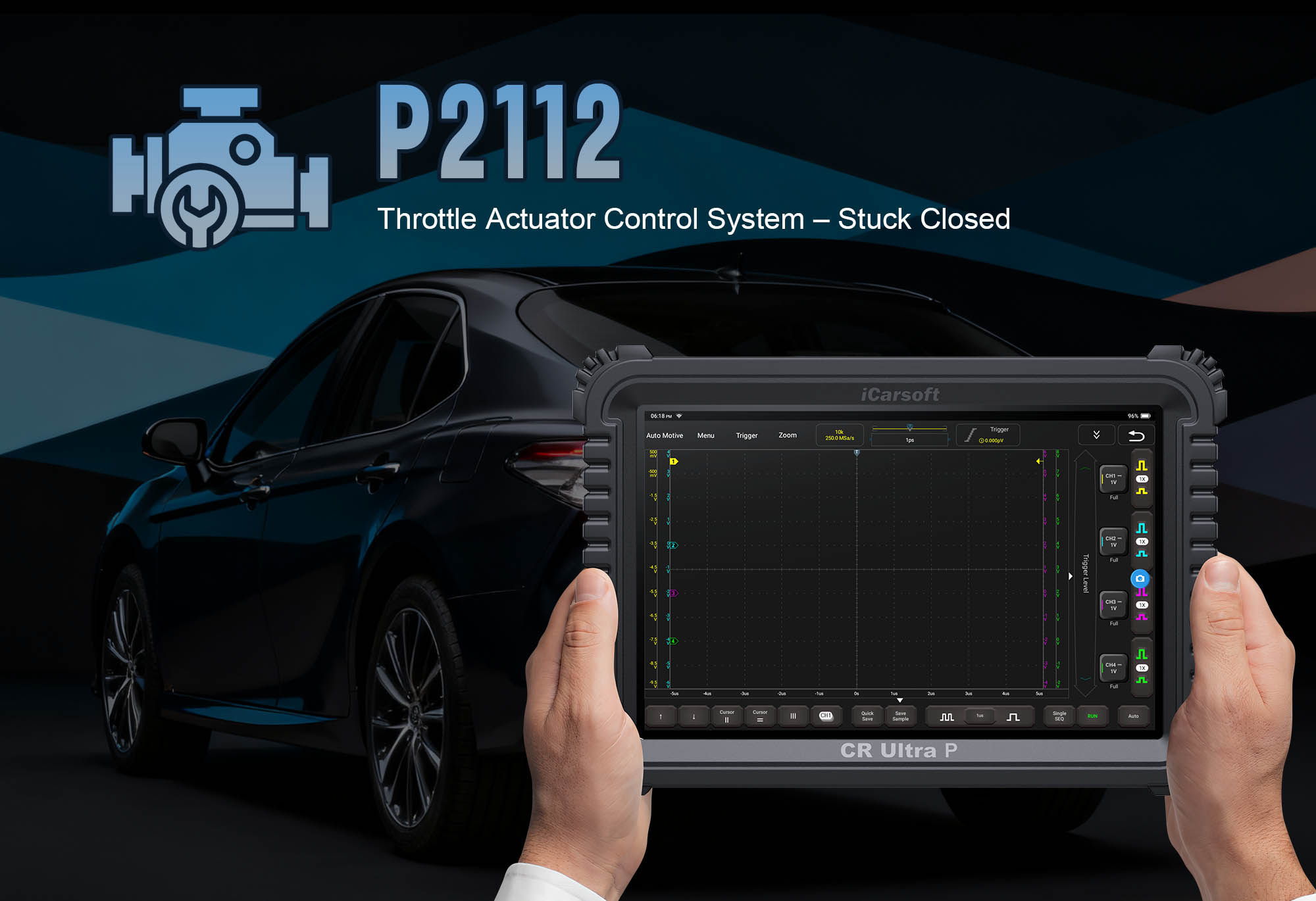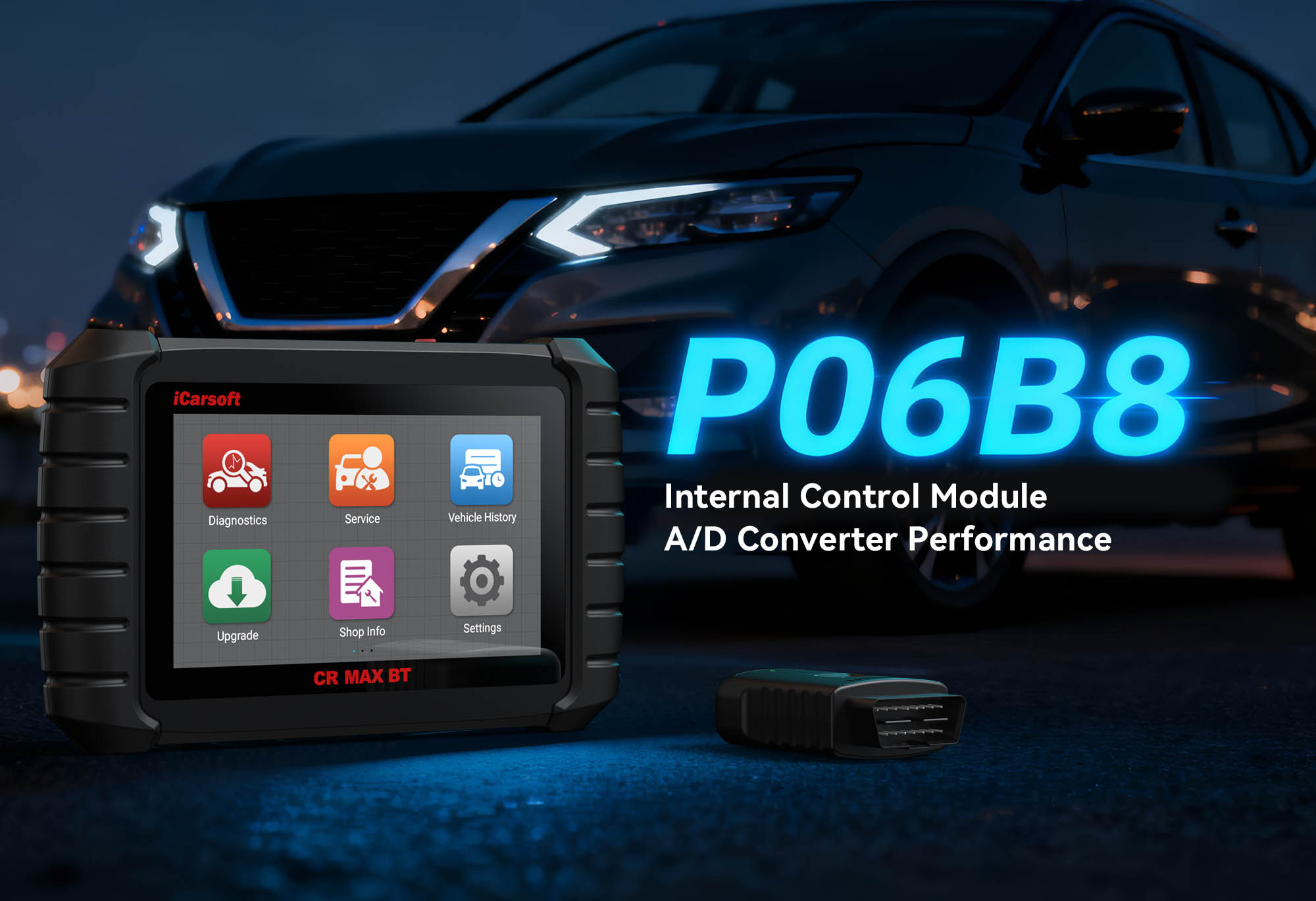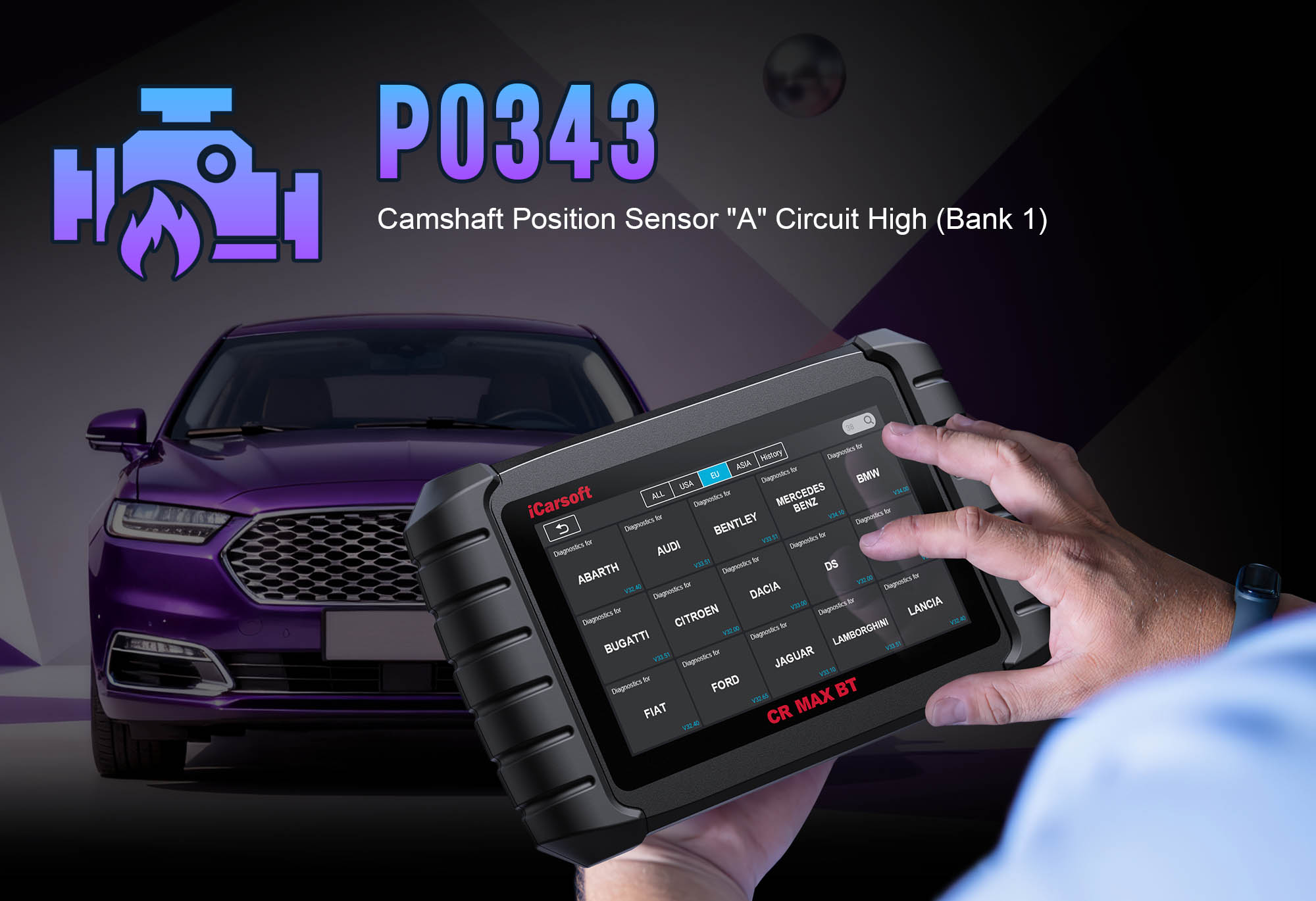Diagnose & Clear P2112 with iCarsoft CR Ultra P
If your vehicle fails to start, idles roughly, or triggers a check engine light with a "throttle stuck" warning, a diagnostic scan will likely return P2112. This OBD-II code stands for "Throttle Actuator Control System - Stuck Closed"—a critical fault indicating the electronic throttle body (throttle actuator) is trapped in a fully or partially closed position, restricting air intake to the engine. The Engine Control Module (ECM) relies on the throttle body to regulate airflow based on driver input; when it’s stuck closed, the engine receives insufficient air, leading to poor performance or even stalling.
Basic scanners might only flag a "throttle stuck issue" but can’t test actuator movement, monitor motor voltage, or recalibrate the throttle body—leaving you guessing between carbon buildup, a faulty motor, or wiring damage. The iCarsoft CR Ultra P, with its OE-level engine diagnostics, bi-directional controls, and topology mapping, solves this. Let’s break down how to diagnose and resolve P2112 with precision, using the CR Ultra P’s unique features to free the stuck throttle and restore normal engine operation.
Understanding P2112: Causes & Key Symptoms
The electronic throttle body uses a small motor to adjust the position of a throttle plate, which controls airflow into the engine. The ECM receives signals from the accelerator pedal sensor (APS) and commands the throttle motor to open/close the plate accordingly. P2106 triggers when the throttle plate is forced closed by the ECM to limit power, while P2112 specifically indicates the plate is mechanically or electrically stuck closed—unable to open even when the ECM sends an "open" command.
Key Symptoms of P2112
-
Difficult or No Start: The engine cranks but won’t fire, or starts briefly and stalls (insufficient air for combustion).
-
Rough Idle: The engine shakes or fluctuates at idle (typically below 500 RPM) due to restricted airflow.
-
Unresponsive Throttle: Pressing the gas pedal has no effect—engine remains at idle or stalls.
-
Illuminated Warning Lights: Both the check engine light and "throttle control" or "engine malfunction" warnings activate.
-
Limp Mode Activation: Severe cases trigger limp mode, but P2112 often leads to stalling before limp mode engages.
Common Causes of P2112
|
Cause
|
Description
|
|
Carbon Buildup on Throttle Plate
|
Oil and carbon deposits accumulate on the throttle plate, sticking it closed (common in direct-injection engines).
|
|
Faulty Throttle Actuator Motor
|
The internal motor fails, unable to generate force to open the throttle plate.
|
|
Damaged Throttle Plate or Housing
|
Physical debris (e.g., dirt, metal shavings) jams the plate, or the housing is bent.
|
|
Wiring/Electrical Issues
|
Frayed wires, corroded connectors, or short circuits disrupt power to the throttle motor.
|
|
ECM Malfunction
|
Rarely, the ECM sends incorrect commands, keeping the throttle plate closed.
|
Why iCarsoft CR Ultra P Excels at Diagnosing P2112
The CR Ultra P outperforms basic tools with features tailored to stuck throttle diagnostics—critical for resolving P2112 accurately:
Bi-Directional Throttle Motor Testing
Activates the throttle motor manually to test if it can open the stuck plate, distinguishing mechanical (buildup/jam) from electrical (motor failure) issues.
Live Data Monitoring
Tracks throttle plate position, motor voltage, and ECM commands in real time, identifying if the motor receives power but fails to move.
Throttle Body Cleaning Guidance
Includes step-by-step cleaning instructions for carbon buildup, a top cause of P2112.
Transmission Topology Mapping
Visualizes the entire throttle actuator circuit as a color-coded diagram, highlighting power disruptions.
Global Vehicle Coverage
Supports 200+ brands and engine types, including 2018+ models with DoIP/CAN-FD protocols.
CR Link VCI Compatibility
Seamless connectivity with modern ECMs, ensuring reliable throttle system diagnostics.
41 Hot Service Functions
Includes throttle adaptation relearn, ECM reset, and motor calibration—essential for restoring throttle movement post-repair.
Step-by-Step: Diagnose P2112 with iCarsoft CR Ultra P
-
Safety First & Initial Checks
1. Turn off engine and ensure it’s cool to avoid injury when accessing the throttle body.
2. Disconnect the negative battery terminal to prevent accidental throttle activation.
3. Locate components via Component Location > Engine > Throttle Actuator System:
- Electronic Throttle Body: Mounted on intake manifold (connected to air intake hose).
- Throttle Actuator Connector: 6–8 pin plug on throttle body.
- Throttle Plate: Visible inside throttle body (remove air intake hose to inspect).
-
Connect Tool & Confirm P2112
Reconnect battery, plug CR Ultra P into OBD-II port, pair with CR Link VCI. Select AutoVIN Identify to retrieve engine type, throttle actuator specs (motor voltage/resistance), and ECM protocol. Navigate to Engine > Fault Codes > Read Codes to confirm P2112. Tap Code Details for insights (e.g., "Toyota Corolla: Plate Position: 0%, Expected: 10–15% at Idle"). Note related codes (P2111, P2113) and resolve P2112 first.
-
Test Throttle Actuator Movement
1. Throttle Plate Opening Test: Turn ignition to "ON" (engine off), go to Engine > Special Functions > Throttle Actuator Control. Select "Open Throttle"—listen for motor whir and visually inspect plate movement (no movement = jam/motor failure; partial movement = buildup).
2. Motor Voltage Test: Run opening test, monitor Engine > Live Data > Throttle Motor Voltage (should rise to 12V; no voltage = wiring/ECM issue).
3. Resistance Test: Disconnect actuator connector, set tool to "Ohms"—probe motor pins (5–10 ohms typical); infinite = motor failure.
-
Inspect Throttle Body & Circuit
1. Carbon Buildup Inspection: Remove air intake hose, inspect throttle plate for black/brown deposits (clean with throttle body cleaner if present). Remove debris jamming the plate with a soft brush.
2. Wiring Harness Inspection: Look for frayed insulation, rodent damage, or metal contact; repair with heat-shrink tubing.
3. Connector Cleaning: Disconnect actuator/ECM connectors; clean corrosion with contact cleaner, straighten bent pins, apply dielectric grease.
-
Repair or Service to Fix P2112
- Throttle Body Cleaning: Spray cleaner on plate/housing, wipe deposits with soft cloth. Reinstall air intake hose; run Engine > Special Functions > Throttle Adaptation to sync with ECM.
- Throttle Body Replacement: Remove old unit, install OEM-compatible throttle body; run Throttle Body Calibration for ECM communication.
- Wiring Repairs: Replace damaged wires with 18-gauge automotive wire; secure harness with zip ties.
- ECM Reset & Relearn: Use Engine > Special Functions > ECM Reset; perform Throttle Adaptation Relearn.
-
Clear P2112 & Validate the Repair
1. Clear Code: Navigate to Engine > Fault Codes > Clear Codes—confirm P2112 deletion.
2. Test Drive: Start engine, verify stable idle (600–800 RPM); test full acceleration for smooth responsiveness. Monitor Live Data for correct plate movement (0% closed at idle, 100% open at full throttle).
3. Post-Repair Validation: Run Engine > System Check—"No Faults Detected" confirms function.
4. Save Report: Document diagnostics/repairs via History & Report for future reference.
Preventing P2112 Recurrence
-
Regular Throttle Body Cleaning: Use Service Reminder to clean every 25,000–30,000 miles—critical for direct-injection engines.
-
Air Filter Maintenance: Replace the air filter every 15,000 miles to prevent debris from entering the throttle body.
-
Connector Inspections: Check throttle actuator/ECM connectors every 10,000 miles—clean and secure loose connections.
-
Free Software Updates: Use One-Key Upgrade to add advanced throttle system diagnostic features for 3 years.
Conclusion
P2112’s stuck closed throttle disrupts engine operation and risks stalling. The iCarsoft CR Ultra P simplifies diagnosis with bi-directional testing, real-time monitoring, and cleaning guidance, ensuring you fix the root cause—whether carbon buildup, a faulty motor, or wiring damage—without guesswork.
With 200+ brand coverage and 41 service functions, the CR Ultra P is more than a P2112 fix—it’s a long-term investment in engine reliability. Restore free throttle movement, eliminate stalling, and drive with confidence—all with one professional-grade diagnostic tool.





